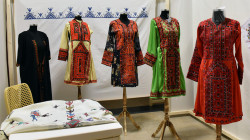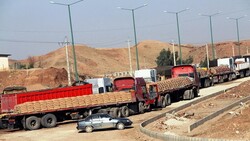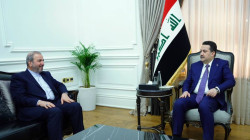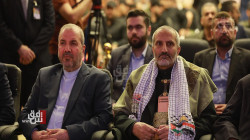Can Iraq play the role of a bridge in the Gulf?, Report
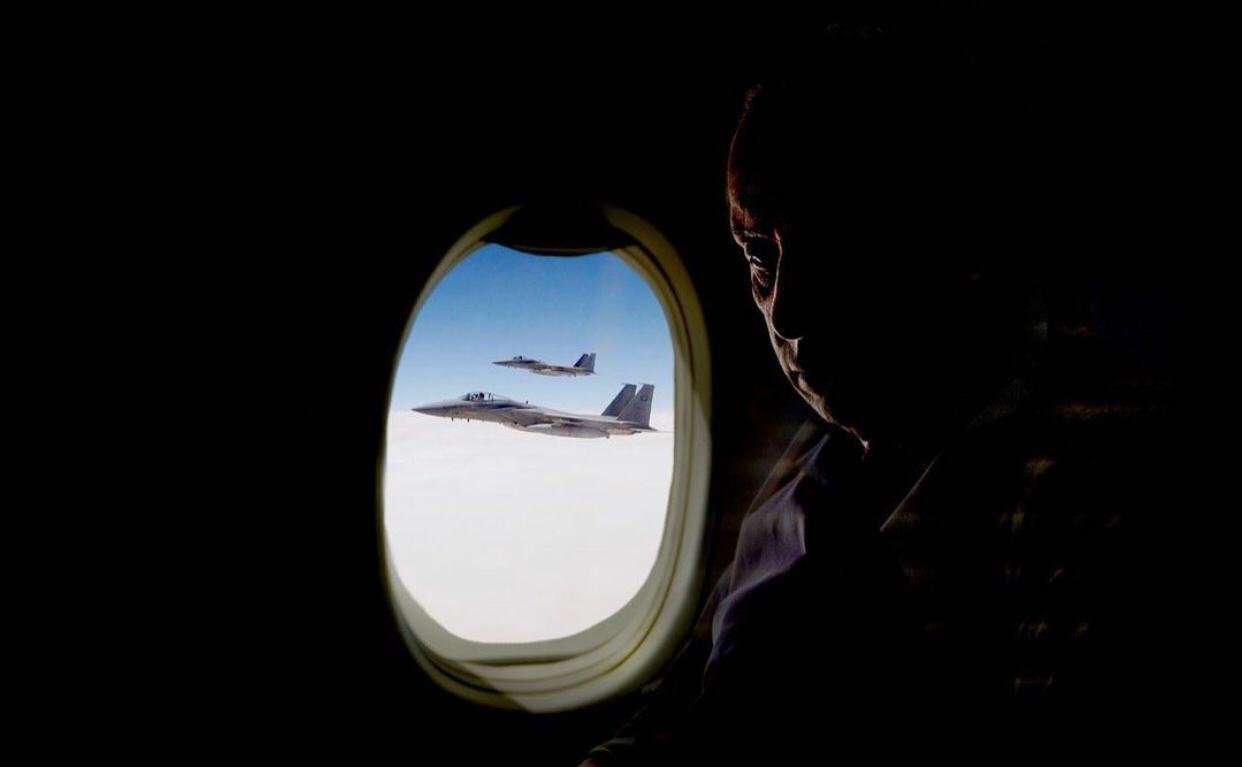
Shafaq News/ There has been a gradual thaw in the relationship between Saudi Arabia and Iraq since 2015, and a number of notable developments have taken place in recent months.
Last November, the Arar border crossing — the principle crossing between the two countries — was opened for the first time in 30 years. In late March, during a trip to Riyadh by Iraqi Prime Minister Mustafa al-Kadhimi, the two countries signed a number of agreements covering economic and cultural relations. Most importantly, the kingdom committed to a substantial increase in investment in Iraq: up to $3 billion, from a current total of about $500 million. Then, less than 10 days after Kadhimi’s trip, according to reports, his government hosted direct talks between the Saudis and their regional rival, Iran. The talks reportedly focused on Yemen.
The Saudis broke relations with Iran allegedly after demonstrations damaged their diplomatic facilities in Iran, but in fact Saudi King Salman used this as an excuse to cut ties. In what was likely a coincidence, two days before the Saudis broke relations with Iran, they officially reopened their Baghdad embassy for the first time in 26 years, a project that had been in the works since the year before. Salman and his son, Crown Prince Mohammed bin Salman, are the most anti-Iranian leaders in the kingdom’s history, so their decision to open a dialogue now is a big step.
An Iraqi official, commenting on the talks, observed that Kadhimi is “very keen” for Iraq to play the role of “a bridge” between its two antagonistic neighbors.
The Iraq-hosted talks portend a potential new dynamic in the relationship between Iran, Iraq, and Saudi Arabia — the three major players in the Persian Gulf — that has been decades in the making.
A BRIEF HISTORY OF A SHIFTING BALANCE
Since 2003, external commentators have often viewed the Gulf as a bipolar system, shaped by the rivalry between Iran and Saudi Arabia. The contemporary Middle East has always been multipolar, and from a historical perspective the Persian Gulf sub-region is best understood as triangular. Starting in the early 1970s, when Britain withdrew from the region, Iran, Iraq, and Saudi Arabia vied for dominance.
Iran, then under the rule of the shah and by far the largest and most powerful of the three players, attempted to assert control over the entire region. Baathist Iraq, the second-biggest of the three players, sought to establish its hegemony over the Arab side of the Gulf, dominating the Gulf Arab monarchies, including Saudi Arabia. The Saudis were the smallest, and with barely an army to speak of, they were the weakest of the three. In discussions with the other two over Gulf security, their objective was to stymie their larger neighbors’ hegemonic enterprises, while asserting their own control over the smaller emirates of the Gulf littoral.
In this context, Saudi Arabia could be considered the “holder” of the Gulf balance. According to realist theory, the “holder” of a balance, or the “balancer,” in a balance of power system is a state not permanently aligned with any other state or coalition of states. Its objective is to equalize between competing axes, swinging back and forth as necessary. In the case of Saudi Arabia in the 1970s, a prerequisite of its ability to play the role of balancer was that it had better relations with both Iran and Iraq than either had with the other.
The Saudis were certainly suspicious of the shah’s imperial ambitions, but his country, like theirs, was a pro-U.S. monarchy. Similarly, the Saudis distrusted Iraq’s Saddam Hussein, but at least he was a fellow Sunni Arab. When either the shah or Saddam pushed a regional policy the Saudis disliked, they could shift toward the other to thwart the initiative.
The Iranian revolution and the Iran-Iraq war upset the Saudis’ delicate balancing act. The Saudis, viewing revolutionary Iran as the greater threat, sided in that war with Baathist Iraq. Although many analysts point to this as the moment when the Saudi-Iran rivalry commenced, the Saudis’ objective at that time was really to reestablish balance between the Gulf’s two biggest players. Although Iraq undoubtedly started that horrible war, Iran was the antagonist that refused to end it until 1988.
The Saudis allied with Iraq as long as Iran continued the war, but, critically, they still reached out to Iran. Thus, for instance, then-Saudi Foreign Minister Saud al-Faisal traveled to Tehran in 1985, at the height of the war. Saudi-Iran relations reached their lowest point following the 1987 Hajj, when Saudi security forces overreacted to an Iranian demonstration and killed 402 mostly Iranian pilgrims. But at the Hajj the next year, which coincided with the end of the war, the Saudis made an important gesture of goodwill to the Iranians: King Fahd expressed sorrow that Iranian pilgrims were absent, a result of the conflagration the year before. The Saudis’ objective was to reestablish a functional relationship with Iran so that once the war was over, they could reestablish the Gulf balance.
Saddam Hussein’s invasion of Kuwait in 1990 shocked Riyadh and permanently suspended the Saudis’ ability to swing between Iran and Iraq. The Saudis cut relations with Iraq and hoped Saddam would be replaced. While they were hardly enthusiastic about the George W. Bush administration’s invasion to overthrow Saddam, in the 1990s and early 2000s they had supported plans to foment a coup in Baghdad to bring into power a new Iraqi leader — a Sunni Arab general — they could work with.
Now, of course, we know that the U.S. invasion did not bring another Sunni Arab dictator, but a Shia-dominated parliamentary system. Saudi King Abdullah, who reigned from 2005 to 2015, hardly viewed the new, Shia-led Iraq as a partner to balance Iran; indeed, he saw it as Iran’s ally — even its vassal — and as a launching pad for its hegemonic ambitions. This was a major overreaction on Abdullah’s part, and the current Saudi leadership has been more amenable to a Shia-led Iraq, even if they are undoubtedly deeply nostalgic for a Sunni-led one.
Abdullah was right about one thing, though: When Saddam was in power, the Saudis had been the Gulf player that had the best relations with each of the other two; once the Iraqi Shia, who have profound connections to their co-religionists in Iran, became empowered in Baghdad, the Saudis lost this advantage. An Iraq with a leadership class that is both predominantly Shia and predominantly Arab is always likely to have better relations with both Iran and Saudi Arabia than each of the other two will have with the other. While Saudi Arabia once had the advantage of being able to swing between its two more powerful Gulf neighbors, that prerogative now goes to Iraq. And indeed Iraq, having been crippled by decades of war, is today the weakest of the three Gulf players. In short, it occupies the position as holder of the Gulf balance that Saudi Arabia once did.
A NEW ROLE FOR IRAQ?
In recent years, Iraq has aimed to pursue a nonaligned foreign policy, with balanced relations with both Iran and Saudi Arabia. Iraqi prime ministers often schedule trips to Tehran and Riyadh together in order to project this balance. As then-Iraqi Prime Minister Haidar al-Abadi remarked in 2017, Iraqis “refuse to be part of the policy of axes.” Indeed, he said that Iraq had been “a victim” of regional rivalries.
The advantage for Iraq of this nonaligned position is that in time — if it can remain nonaligned — it will be able to play its two more powerful Gulf neighbors off each other, as Saudi Arabia did a generation ago. But it can also serve as a bridge between Iran and Saudi Arabia, as Prime Minister Kadhimi today appears to intend. Indeed, Iraq is the natural venue for Iran and Saudi Arabia to sort out their differences. And Iraq wants to bridge the Saudi-Iran divide. As the Iraqi official commenting on the Iraq-hosted talks observed, “It’s in Iraq’s interest that it can play this role. The more confrontation you have in the region, the more they play out here.” Saudi-Iran détente means a calmer region and a calmer Iraq.
In the near term, it is far from clear that Iraq will be able to do this. It is not at all certain that Saudi Arabia and Iran really have the will to reconcile. The talks so far have reportedly focused on Yemen. The Saudis are bogged down there in a quagmire that costs them a fortune. Iran backs the Houthi rebels, but only needs to spend a pittance on them. The Saudis need Iran to convince the Houthis to end a war they are winning and in which Saudi cities are under continuous threat of missile and drone attacks. If the Iraqi-brokered talks produce a ceasefire, it would be a major improvement in the regional tensions and help ease the world’s worst humanitarian catastrophe.
Iraq is likely still far too weak to exert the sort of leverage over its two neighbors that would help propel reconciliation. But the Saudi-Iran talks that reportedly took place in Iraq earlier this month may herald a dynamic that will more fully emerge in the future. In short, the Gulf region is not bipolar. It is triangular. Iraq, which has been out of commission for many years, will return as a major player. And once it does, it could help relieve tensions between the other two.
The United States should quietly support the Iraqi effort. It is in our interest to lower sectarian tensions in the region. President Biden has made ending the war in Yemen a priority. Baghdad’s help is to the advantage of everyone in ending this tragedy.
Source: Brookings.edu
